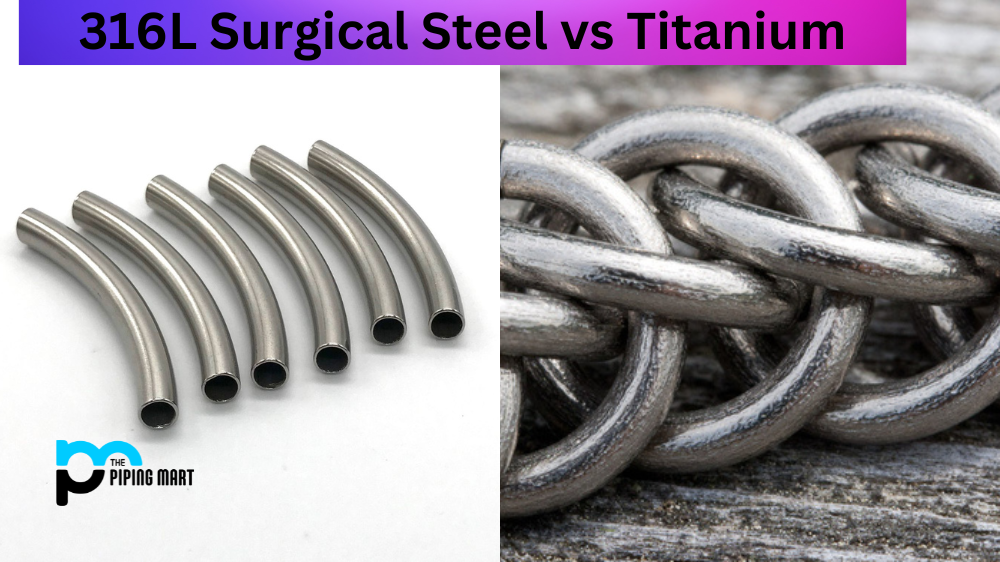If you’re looking for a new piece of body jewelry, you may have noticed the terms “316L surgical steel” and “titanium” popping up in product descriptions. But what do those words actually mean? What are the differences between these materials? In this blog post, we’ll discuss the basics of 316L surgical steel and titanium so that you can make an informed decision when selecting your next piece of body jewelry.
316L Surgical Steel
316L surgical steel is a type of stainless steel that is often used in medical settings due to its resistance to corrosion and tarnishing. It is a popular choice for body jewelry because it is strong yet lightweight, making it comfortable to wear all day long. Additionally, 316L surgical steel is hypoallergenic, meaning that it won’t cause any allergic reactions or skin irritation. It also doesn’t require too much maintenance—just give your jewelry a quick wipe with a damp cloth every few days to keep it looking its best.
Titanium
Titanium is another popular choice for body jewelry due to its durability and strength. This metal is lightweight while still being able to stand up to everyday wear and tear. Plus, titanium doesn’t corrode or tarnish like other metals can—meaning that your jewelry will look just as good as the day you bought it! Keep in mind, though. Titanium does tend to be more expensive than other metals, such as 316L surgical steel.
Difference Between 316L Surgical Steel and Titanium
When choosing body jewelry, you may have encountered the terms “316L Surgical Steel” and “Titanium”, which refer to two different types of metals used in the production of body adornments. Although physically similar, these two materials have vastly different properties that make them suitable for different uses. 316L Surgical Steel is a low-carbon steel alloy that has been specifically designed to reduce levels of nickel, in addition to other elements, to make it safe for a range of medical purposes. This means that it is ideal for use as medical implants or body piercings as it offers excellent corrosion resistance with relative toughness and it is also more economical than Titanium. On the other hand, Titanium possesses great strength and tensile properties whilst remaining incredibly lightweight; because of this it is often seen being used in aerospace engineering and hip replacements amongst other applications. Depending on your requirements, either 316L Surgical Steel or Titanium may be more desirable for your particular needs.
- 316L surgical steel is a type of stainless steel that contains molybdenum, which makes it more resistant to corrosion than other types of stainless steel.
- Titanium is a type of metal that is lightweight and strong. It is also resistant to corrosion.
- 316L surgical steel is less likely to cause an allergic reaction than titanium.
- Titanium is more expensive than 316L surgical steel.
- Titanium is not magnetic, while 316L surgical steel is slightly magnetic.
Conclusion:
When selecting your next piece of body jewelry, consider both 316L surgical steel and titanium as potential options. Each material has unique properties that make them suitable for different types of body jewelry. The main differences between the two metals include price point (surgical steel tends to be cheaper) and durability (titanium tends to be more durable). Ultimately, which one you choose comes down to personal preference—and whichever one looks best on you! No matter which material you opt for, make sure you take proper care of your jewelry by wiping it down regularly with a damp cloth so that it continues looking great for years to come!

Pipingmart is a B2B portal that specializes in metal, industrial and piping items. Additionally, we share the latest information and information about materials, products and various types of grades to assist businesses that are involved in this business.




